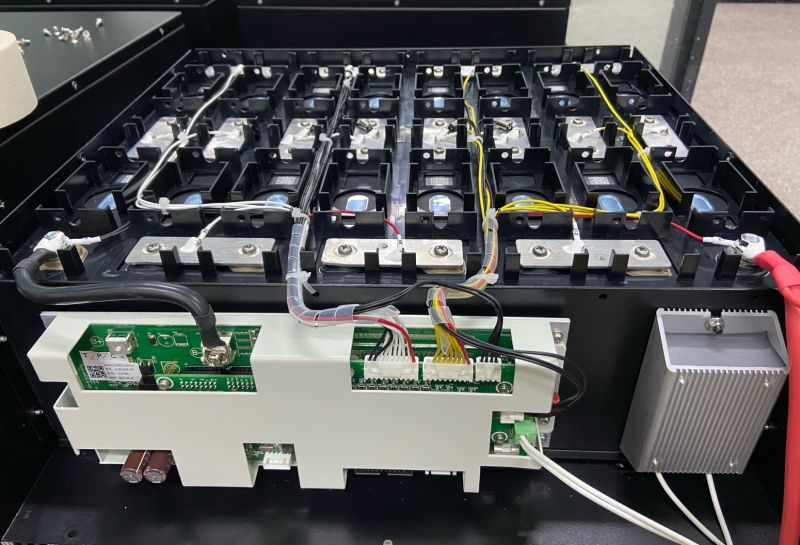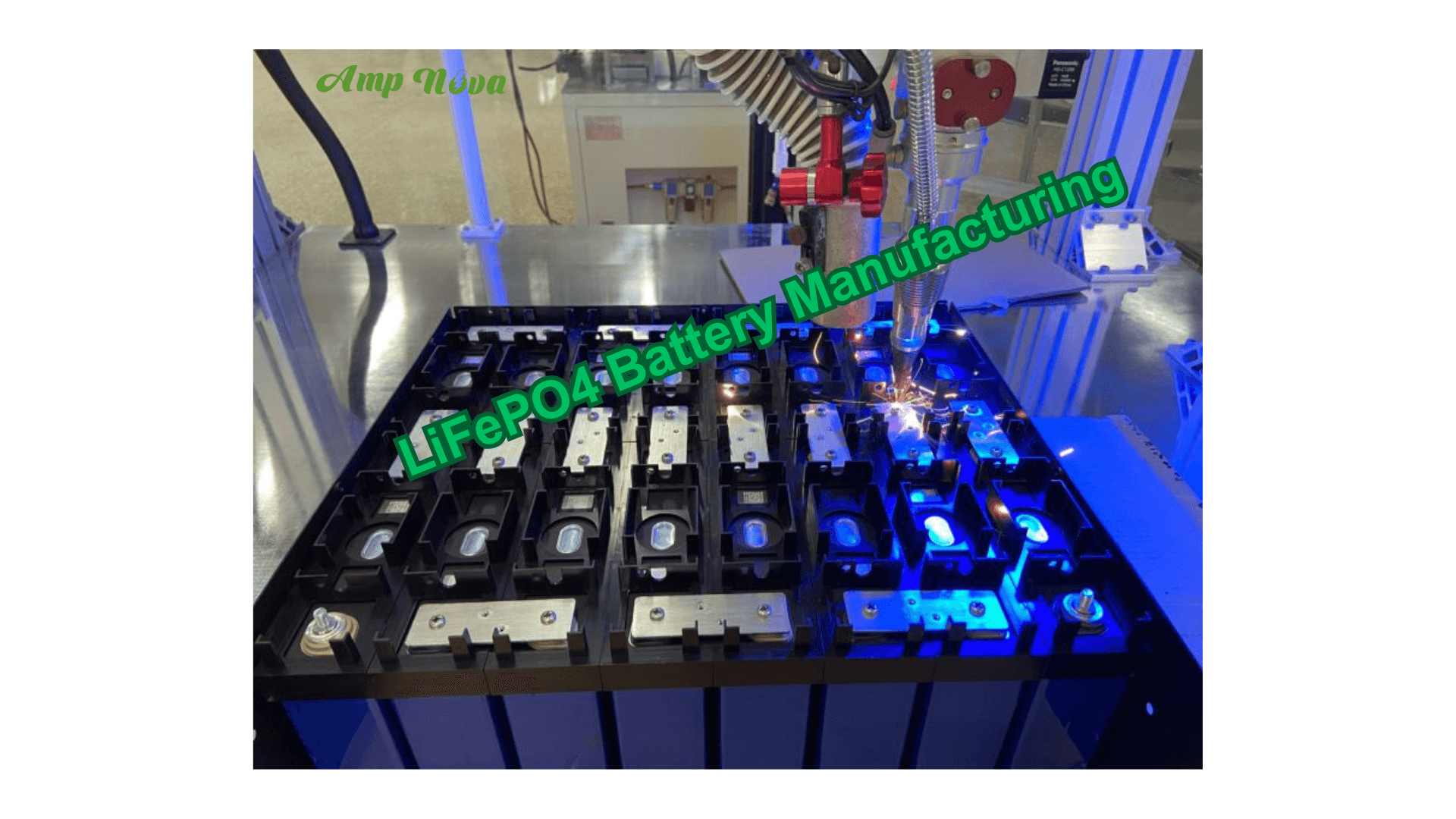Lithium ion battery manufacturing is at the forefront of today’s technological advancements. As the need for dependable and efficient energy storage solutions intensifies, these battery packs stand out for their durability and performance. So, what goes into the creation of these energy titans? Delve into the detailed journey of producing these modern marvels
Contents
- 1 Cell Sorting: Ensuring Uniformity from the Start
- 2 Cell Matching: Crafting a Harmonious Lithium ion battery Pack
- 3 Bracket Assembly: Holding Everything Together
- 4 Laser Welding: Forging Strong Connections
- 5 Installation of Data Collection Wires: The Eyes and Ears of the lithium ion battery pack
- 6 Temperature Sensor Installation: Keeping Things Cool
- 7 BMS Assembly: The Brain of the Battery Pack
- 8 Enclosure Assembly: The Final Protective Layer
- 9 People Also Ask
- 9.1 1. What are the steps in battery cell manufacturing?
- 9.2 2. How are battery packs made?
- 9.3 3. What are the components of a lithium-ion battery pack?
- 9.4 4. What materials are used in battery packs?
- 9.5 5. What are Tesla battery packs made of?
- 9.6 6. What is the difference between a battery and a battery pack?
Cell Sorting: Ensuring Uniformity from the Start
Before any assembly begins, it’s crucial to ensure that the cells used are of the highest quality and uniformity. This is where cell sorting comes into play. Manufacturers purchase cells from EVE, Gotion, and CATL, and these cells can have slight variations in capacity, voltage, and internal resistance after being produced. By sorting and categorizing these cells based on these parameters, manufacturers ensure that each battery pack performs uniformly and efficiently. This meticulous process ensures that every cell within a pack is compatible, reducing the risk of imbalances during operation.
Cell Matching: Crafting a Harmonious Lithium ion battery Pack
Once sorted, cells are then matched based on their voltage, capacity, and other vital characteristics. This step is crucial in ensuring that the battery pack operates in a balanced manner. By grouping similar cells together, manufacturers can guarantee that the pack will deliver consistent performance throughout its lifespan.
Bracket Assembly: Holding Everything Together
With the cells sorted and matched, the next step is to organize and hold them in place. Brackets, typically crafted from durable plastic, are used for this purpose. However, for those looking for a more economical solution, there’s an alternative. Cells can first be fixed in place using fiber tape, providing initial stability. Following this, metal brackets are used to secure the entire module, ensuring that the cells remain firmly in place during operation.
Laser Welding: Forging Strong Connections
The connections between the cells are of paramount importance. A weak link can compromise the entire pack. To ensure that the connections are both stable and reliable, manufacturers employ laser welding techniques. This method connects the positive and negative terminals of the cells, creating a bond that’s both strong and efficient.
Installation of Data Collection Wires: The Eyes and Ears of the lithium ion battery pack
To monitor the performance of the battery pack, data collection wires are installed. These wires, connected to the Battery Management System (BMS), gather real-time data on voltage, current, and other vital parameters. This continuous monitoring ensures that the battery pack operates within optimal parameters, guaranteeing both safety and efficiency.
Temperature Sensor Installation: Keeping Things Cool
Temperature fluctuations can severely impact the performance and lifespan of a lithium ion battery. To ensure that the pack remains within safe temperature limits, temperature probes are strategically installed at key locations. These sensors continuously monitor the temperature, providing real-time data to the BMS, which can then take corrective actions if necessary.
BMS Assembly: The Brain of the Battery Pack
The Battery Management System (BMS) is the heart and brain of the LiFePO4 battery pack. It continuously monitors various aspects of the pack, such as charging, discharging, temperature, and voltage. By managing these parameters, the BMS ensures that the lithium ion battery operates efficiently and safely, maximizing its lifespan.

Enclosure Assembly: The Final Protective Layer
With all the components in place, the final step is to encase the battery pack and BMS within a protective shell or casing. This enclosure not only provides an added layer of safety but also ensures the durability of the pack. Made from robust materials, this casing shields the battery pack from external factors, ensuring its longevity.
In conclusion, the manufacturing process of lithium ion battery packs is a meticulous and intricate one. Every step, from cell sorting to enclosure assembly, is crucial in ensuring that the final product is of the highest quality. For businesses that prioritize both quality and affordability, understanding this process can provide a competitive edge in the market. As the demand for energy storage solutions continues to grow, so does the importance of manufacturing processes that prioritize both efficiency and safety.
People Also Ask
1. What are the steps in battery cell manufacturing?
- Battery cell manufacturing involves:
- Material Preparation: Active materials for the anode and cathode are prepared.
- Electrode Formation: The active materials are applied to metal foils to form electrodes.
- Cell Assembly: The anode, cathode, and separator are assembled in a specific arrangement.
- Electrolyte Filling: Liquid electrolyte is introduced into the cell.
- Formation: The cell is charged and discharged to activate it.
- Testing: The cell’s performance is tested for quality assurance.
2. How are battery packs made?
- Battery packs are made by assembling individual cells (or modules of cells) together, connecting them electrically, and integrating them with a BMS and other necessary components, all enclosed in a protective casing.
3. What are the components of a lithium-ion battery pack?
- The main components include individual battery cells, a BMS, data collection wires, temperature sensors, protective casing, and connection terminals.
4. What materials are used in battery packs?
- Materials include lithium-based compounds for the electrodes, metal foils (like copper and aluminum) for current collectors, organic solvents for the electrolyte, and various plastics and metals for the casing and connectors.
5. What are Tesla battery packs made of?
- Tesla battery packs are made of thousands of individual lithium-ion cells, a sophisticated BMS, cooling systems, and a protective casing. The exact materials and chemistry can vary based on the model and production year.
6. What is the difference between a battery and a battery pack?
- A battery is a single unit that stores and provides electrical energy. A battery pack, on the other hand, consists of multiple batteries (or cells) connected together to provide a combined voltage or capacity, often integrated with management and protective systems.
